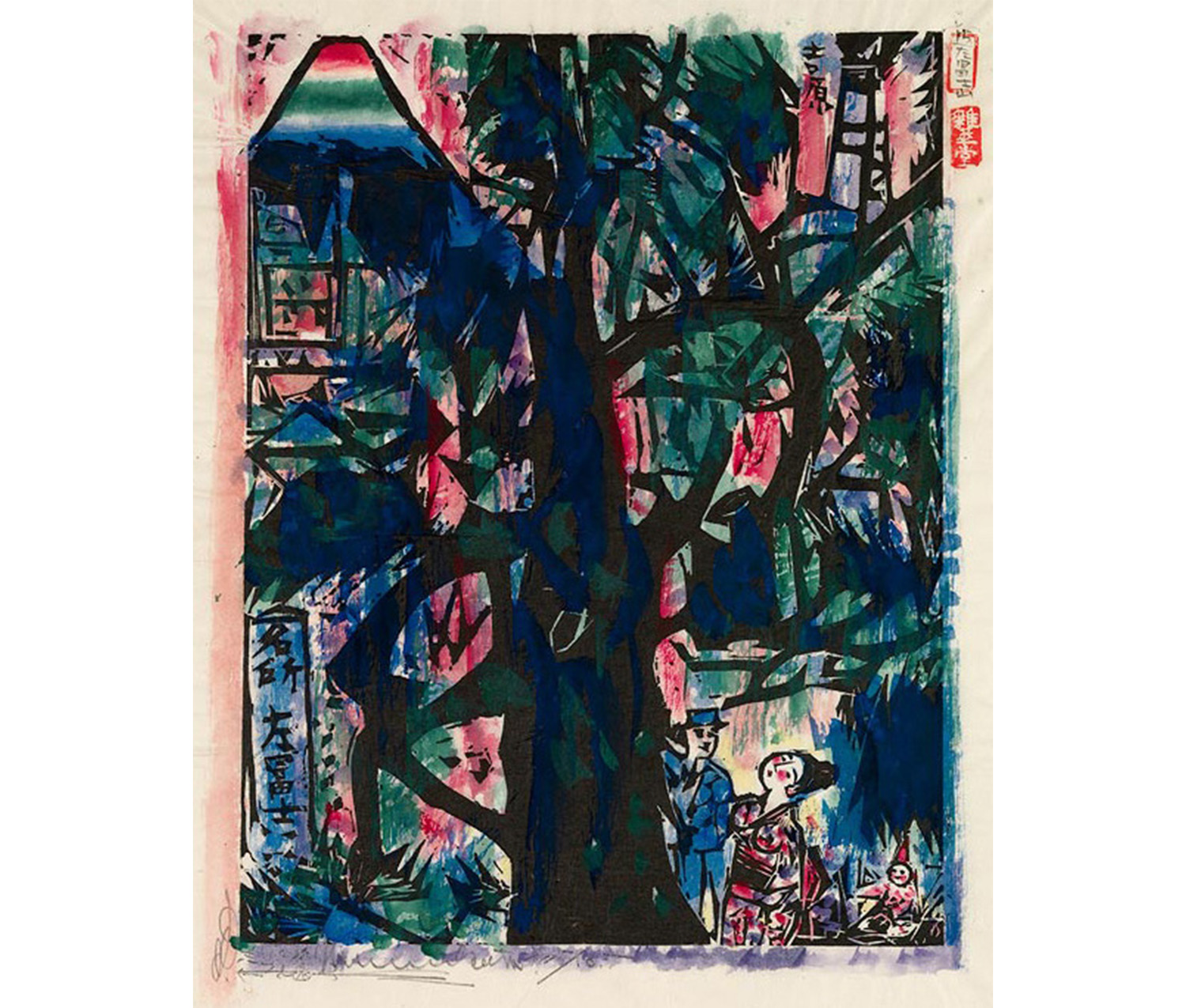
Munakata Shiko
Aprile Gallant is the Senior Curator of Prints, Drawings, and Photographs at SCMA.
One of the many pleasures of having a collection of 16,000+ works on paper at my fingertips is the chance to delve deeper into the work of artists with whose work I am only minimally familiar. Such is the case with the work of Munakata Shiko (1903-1975), one of the most recognized and collected artists of sosaku-hanga, Japan’s so-called “creative print movement.” During the early 20th century Japanese printmakers actively sought to break with the tradition of ukiyo-e printing in which the cutter of the block was simply replicating the vision of the designer of an image. The sosaku-hanga artists wished to follow the European tradition of the peintres-graveurs (painter/printmakers) who were able to fully realize their vision by fully participating in all aspects of making a print.
My rediscovery of Munakata is related to research for a series of exhibitions highlighting SCMA’s Asian collections. Entitled Collecting the Art of Asia, this project, which is on view until May 26, 2013, features four installations of works from east, south, and central Asia arranged over three floors. The exhibitions are designed to celebrate the 100th anniversary of SCMA’s first acquisitions of Asian art, which were gifts from the famed collector Charles Freer in 1913.
The installation I worked on focuses on prints made between 1950 and the present day, which allows SCMA to showcase our expanding holdings in this area. A key component in our quest to build a strong collection of Asian art has been recent gifts of contemporary Chinese and Japanese prints. It has been fascinating to uncover the historical underpinnings of contemporary printmaking in Asia which emerged during the internationalization of print culture during the 1950s.
Born to a family of blacksmiths in Aomori, Munakata first learned about European art from local painters, and he was particularly enamored of Vincent van Gogh’s work. After becoming disillusioned with oil painting early in his career, Munakata found a way to combine his interest in Japanese tradition and modern Western art through printmaking. Although he devoted himself to woodcuts beginning in 1928, Munakata did not develop an international reputation for his prints until the 1950s, winning top prizes at print exhibitions in Lugarno (1952), São Paulo (1955), and Venice (1956).
Severely nearsighted from his childhood, Munakata kept his face very close to the block as he cut, sometimes following his drawing, but often creating the image spontaneously during the cutting process. He was equally idiosyncratic in his printing, titling, numbering, and dating of works, frequently reworking and printing blocks many years after they were first cut.
This is undoubtedly the case with this impression of Sand Nest, a work first created in 1938 as part of a series of thirty-one woodcuts illustrating the Nō play Uto No Hangasaku (Birds of Sorrow). Most of the blocks in this series were destroyed in an air raid during World War II, but this block is clearly registered as having been printed in 1957.
Another work by Munakata in the exhibition is one image from his series of views of the Tōkaidō. The Tōkaidō was the route that linked Tokyo and Kyoto, which were, at the time, the two largest cities in Japan. This subject was most famously treated by Hiroshige, who issued two volumes of 53 ukiyo-e prints of the Tōkaidō, in 1834. This series documented the 53 “stations” along the route which were marked by inns where travelers could rest or refresh their horses.

Hiroshige. Japanese, 1797–1858. Yoshiwara, Station 15 from the series Fifty-three Stations of the Tōkaidō (Kyoka ed.), late 1830s. Woodcut printed in color on paper. Bequest of Henry L. Seaver. Photography by Petegorsky/Gipe. SC 1976.54.436.15.
Hiroshige’s image is both illustrative and narrative in style, making use of the perspective of the winding road toward the distant Mount Fuji, using soft and modulated applications of water-based ink to provide naturalistic coloring.

Munakata Shiko. Japanese, 1903–1975. Yoshiwara from Munakata’s Tōkaidō Road, 1963–64. Woodcut printed in black with hand coloring on thin cream-colored washi paper. Gift of the estate of Mrs. Sigmund W. Kunstadter (Maxine Weil, class of 1924). Photography by Petegorsky/Gipe. SC 1978.56.25.
Munakata’s version of the same scene, by contrast, is flat and expressive, using bright patches of color applied both to the back and the front of the image to enliven the surface of the print. In creating this series, Munakata made a number of trips along the Tōkaidō, seeking to record a modern version of this famed historic subject in quick ink sketches. These he translated into woodblocks in his studio, adding color.
Learn more about the Collecting Art of Asia exhibition and SCMA's growing collection of Asian art in our online catalogue.